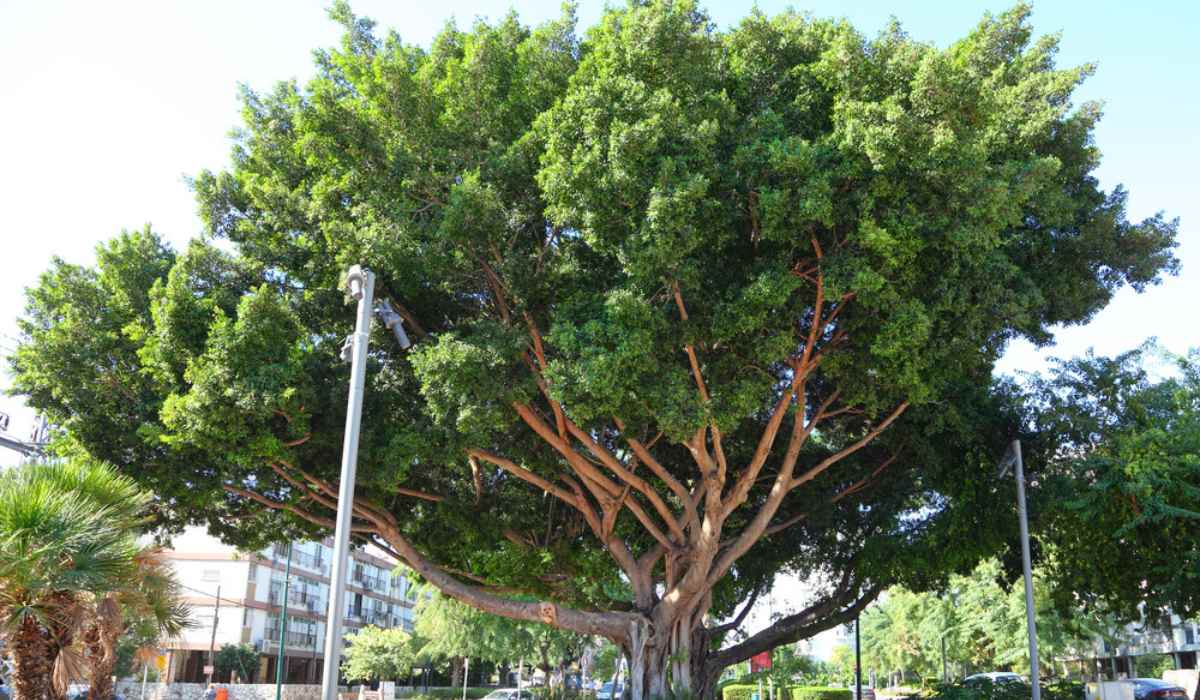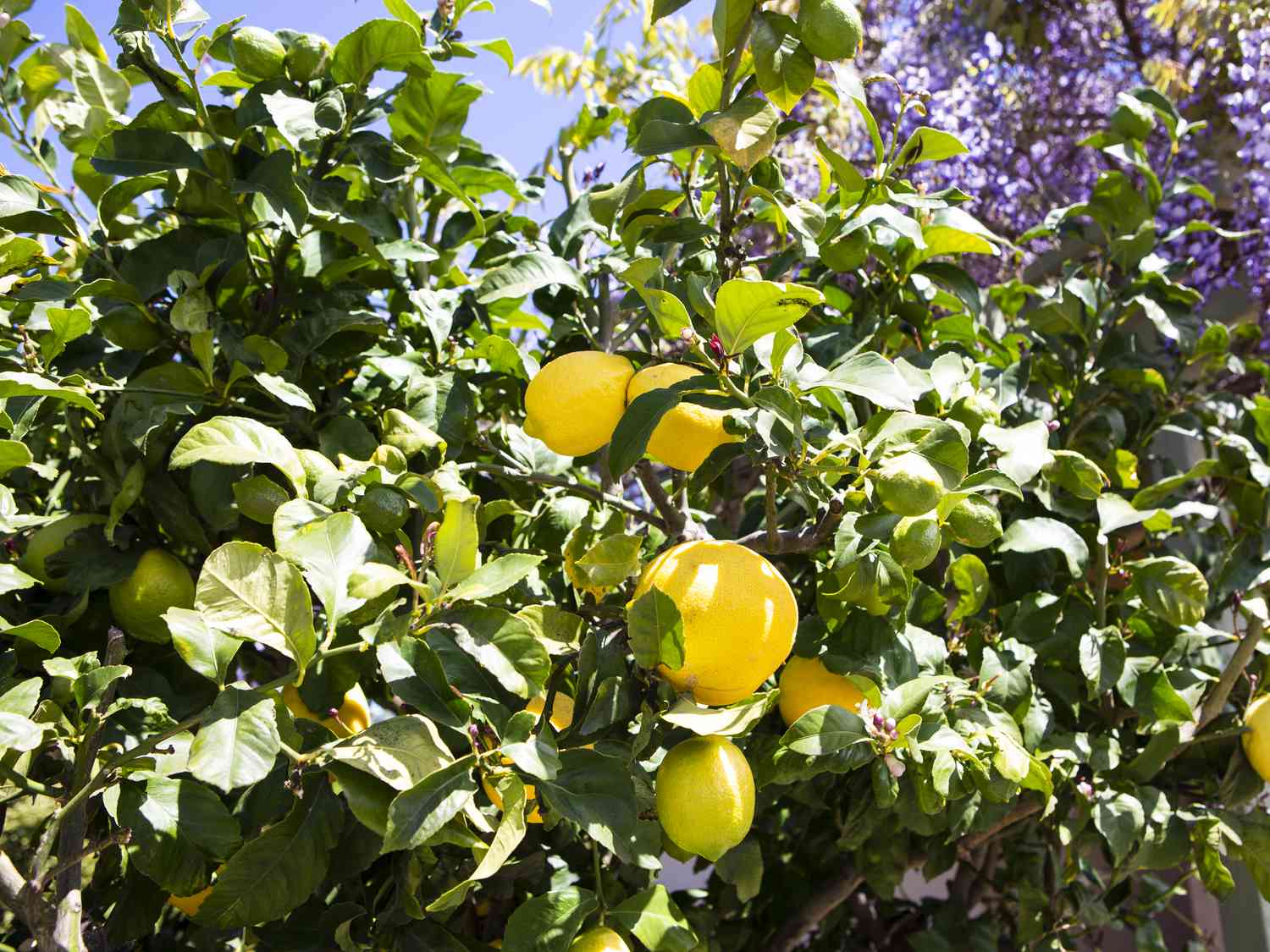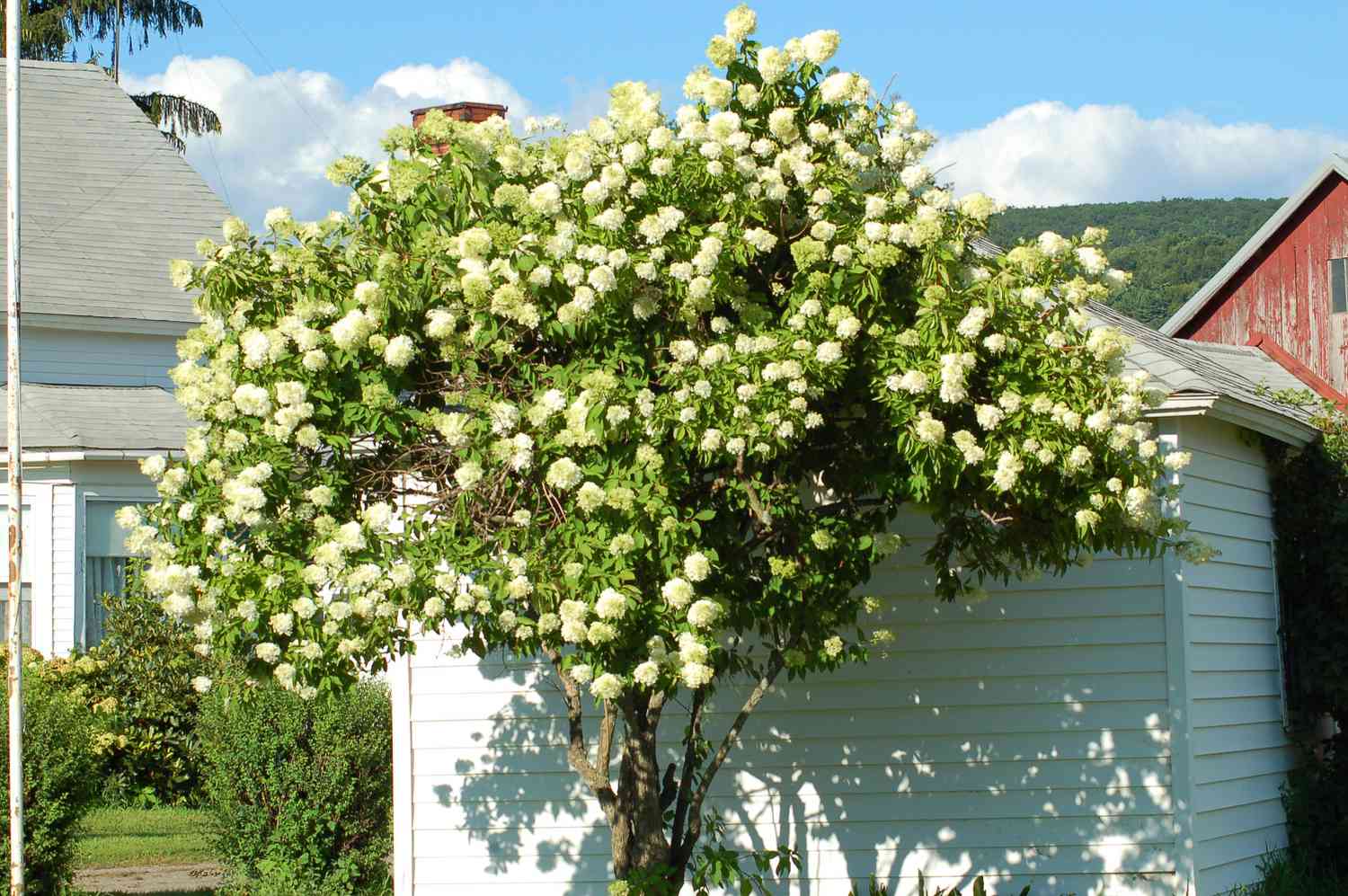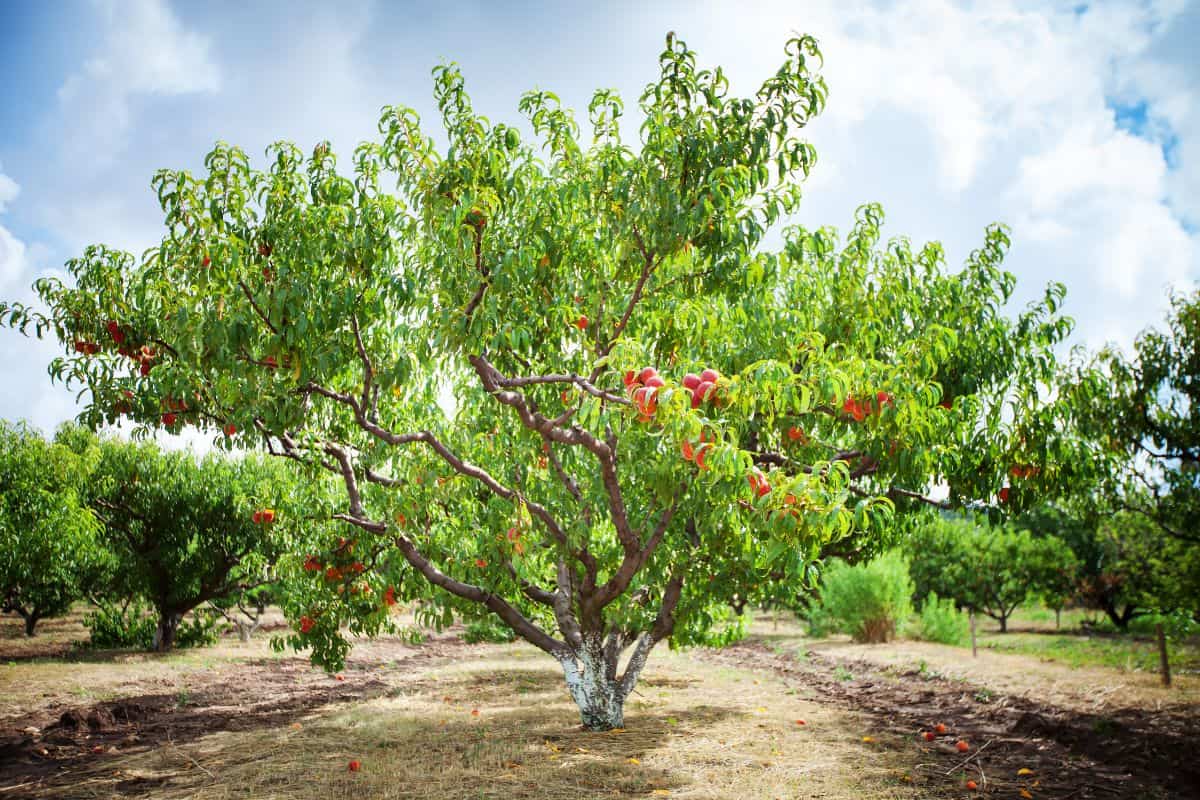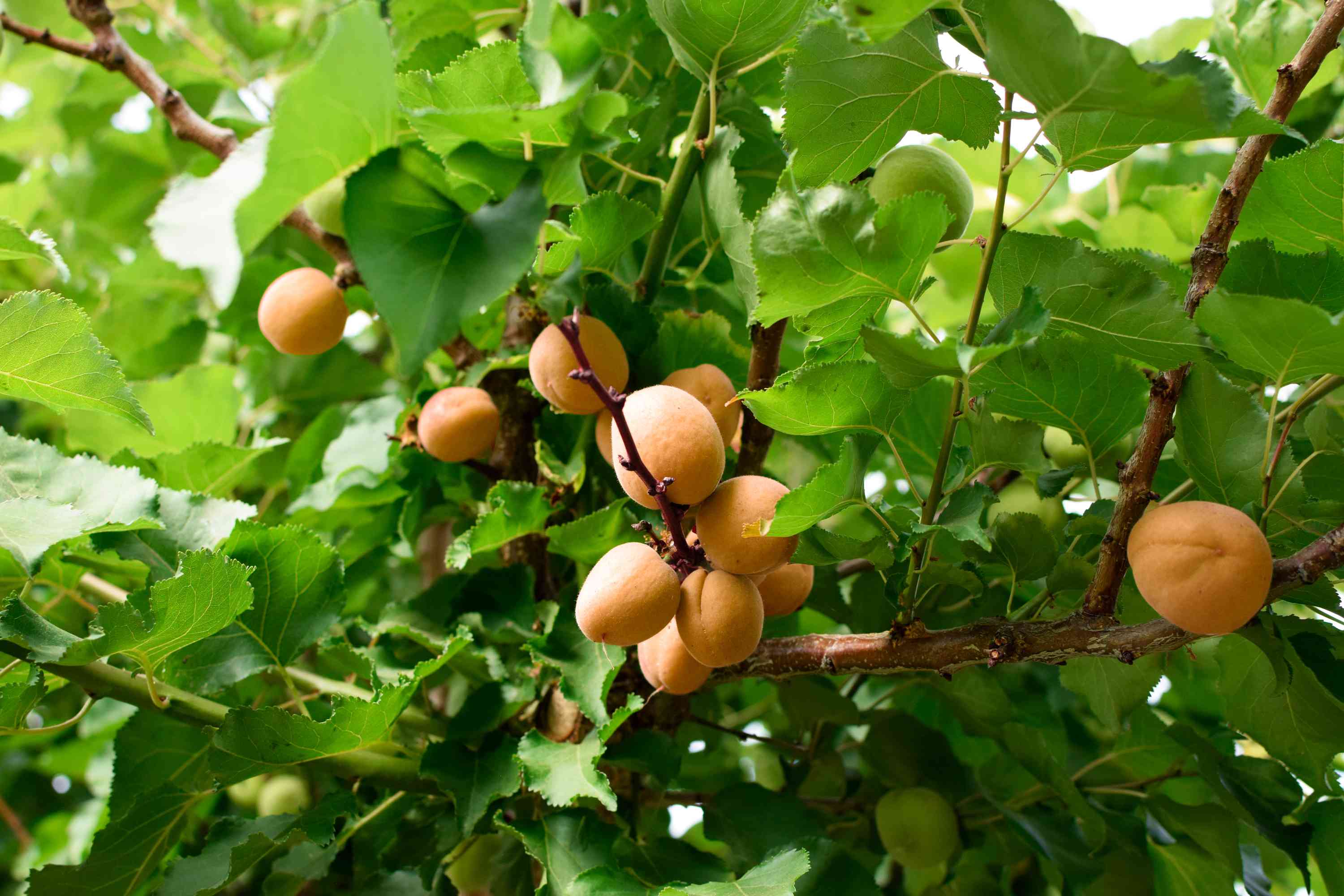Home>Types of Gardening>Edible Gardening>How Big Do Lemon Trees Grow
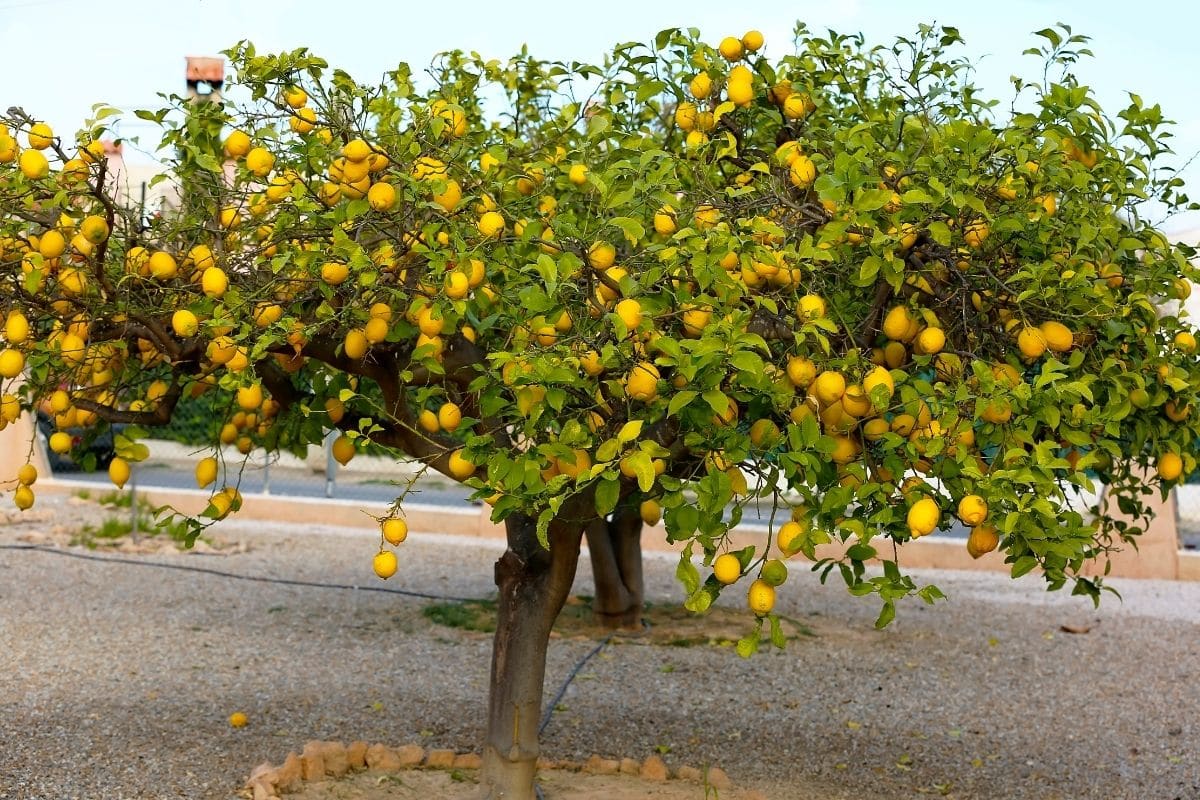

Edible Gardening
How Big Do Lemon Trees Grow
Modified: January 22, 2024
Discover how big lemon trees can grow in your edible gardening journey. Learn all about the growth potential of lemon trees and tips to maximize their size.
(Many of the links in this article redirect to a specific reviewed product. Your purchase of these products through affiliate links helps to generate commission for Chicagolandgardening.com, at no extra cost. Learn more)
Table of Contents
Introduction
Welcome to the world of edible gardening, where you can witness the magic of nature right in your own backyard. One of the most popular and rewarding pursuits in this realm is growing your own fruits, and lemon trees are a delightful choice for any gardener.
Not only do lemon trees provide fresh and tangy fruits to enhance culinary creations and quench thirst, they also add a touch of beauty and fragrance to your outdoor space. But before diving into the endeavor of growing lemon trees, it’s important to understand how big they can actually grow.
The size of lemon trees can vary significantly depending on several factors. These include the variety of the lemon tree, the growing conditions, and the pruning techniques used to control its size. By understanding these factors and implementing the proper care, you can ensure that your lemon tree thrives and reaches its maximum potential.
In this comprehensive guide, we will explore the various factors that influence the size of lemon trees, optimal growing conditions for their growth, common lemon tree varieties and their respective sizes, pruning techniques to control size, and limitations when growing lemon trees in containers. So, let’s dig in and unlock the secrets of lemon tree growth!
Factors Affecting the Size of Lemon Trees
Several factors influence the size of lemon trees, ranging from genetic traits to environmental conditions and cultivation practices. Understanding these factors will help you manage your lemon tree’s growth and ensure it reaches its full potential.
1. Lemon Tree Variety: Different lemon tree varieties have varying growth habits and sizes. Some varieties, such as the Eureka lemon, can grow up to 20 feet tall, while others, like the Ponderosa lemon, are smaller, reaching a height of around 8 to 10 feet. It’s essential to select a variety that suits your available space and desired tree size.
2. Rootstock: Lemon trees are often grafted onto rootstock, which affects their size and overall vigor. Common rootstocks used for lemon trees include rough lemon, Flying Dragon, and Volkamer lemon. These rootstocks can influence the growth rate and size of the tree, so it’s important to choose the right rootstock for your desired tree size.
3. Age of the Tree: The age of the lemon tree plays a role in its size. Younger trees will be smaller, while older, more established trees will be larger and more robust. Keep in mind that lemon trees take several years to reach their full size, so be patient and allow your tree to mature.
4. Growing Conditions: The environmental conditions in which the lemon tree is grown have a significant impact on its size. Lemon trees thrive in full sun, so providing at least 6 to 8 hours of direct sunlight each day is crucial for optimal growth. Additionally, providing well-draining soil, regular watering, and proper fertilization will ensure the tree receives the necessary nutrients to reach its maximum size.
5. Pruning and Training: Pruning plays a vital role in managing the size of lemon trees. Regular pruning helps maintain a desired shape and size, encourages airflow, and controls excessive growth. By selectively removing branches and trimming back new growth, you can prevent the tree from becoming overgrown and ensure its overall health and productivity.
By considering these factors and implementing appropriate practices, you can effectively manage and control the size of your lemon tree, allowing it to flourish in your garden or orchard.
Optimal Conditions for Lemon Tree Growth
Lemon trees require specific growing conditions to thrive and reach their full growth potential. By providing optimal conditions, you can ensure that your lemon tree remains healthy, productive, and visually stunning. Let’s explore the key factors for creating the ideal environment for your lemon tree.
1. Sunlight: Lemon trees are sun-loving plants and require a minimum of 6 to 8 hours of direct sunlight each day. Choose a location in your garden or yard that receives ample sunlight throughout the day. Ensure that there are no obstructions blocking the sunlight, such as tall buildings or trees.
2. Soil: Lemon trees prefer well-draining soil that is rich in organic matter. The soil should have a pH level between 5.5 and 6.5, slightly acidic to neutral. If your soil is heavy or clay-like, consider amending it with organic matter, such as compost or well-rotted manure, to improve its drainage and fertility.
3. Watering: Adequate watering is crucial for the healthy growth of lemon trees. Water your lemon tree deeply and evenly, ensuring that the soil is moist but not waterlogged. Watering frequency will depend on the weather and the moisture retention capacity of your soil. During hot and dry periods, increase the frequency of watering to prevent the tree from drying out.
4. Fertilization: Lemon trees benefit from regular fertilization to provide the necessary nutrients for growth and fruit production. Use a balanced citrus fertilizer with a ratio of nitrogen (N), phosphorus (P), and potassium (K) suitable for citrus trees. Follow the manufacturer’s instructions for proper application rates and timing.
5. Temperature: Lemon trees thrive in moderate to warm temperatures. They are sensitive to frost and cold temperatures, so if you live in a colder climate, consider growing your lemon tree in a container so that you can bring it indoors during the winter months. The ideal temperature range for lemon tree growth is between 70°F and 85°F (21°C and 29°C).
6. Air Circulation: Good airflow around the lemon tree is essential for preventing diseases and promoting healthy growth. Avoid planting lemon trees too close to walls or other structures that may impede air movement. Pruning the tree to maintain an open canopy and removing any crowded branches will also help improve airflow.
By providing these optimal growing conditions, your lemon tree will flourish, producing an abundance of vibrant and delicious fruits for you to enjoy. Ensure ongoing care and maintenance, and your lemon tree will reward you with its beauty, fragrance, and year-round harvest.
Common Lemon Tree Varieties and Their Sizes
There are several lemon tree varieties available, each with its own unique characteristics and size. Here are some common lemon tree varieties and their respective sizes:
1. Eureka Lemon: The Eureka lemon is one of the most widely grown lemon tree varieties. It is a vigorous grower, reaching a height of 10 to 20 feet (3 to 6 meters) and spreading up to 8 to 12 feet (2.4 to 3.6 meters) wide. This variety produces medium-sized, juicy lemons with a bright yellow color.
2. Lisbon Lemon: Another popular lemon tree variety is the Lisbon lemon. It is similar in size to the Eureka lemon, growing to a height of 10 to 20 feet (3 to 6 meters) and spreading up to 8 to 12 feet (2.4 to 3.6 meters) wide. The Lisbon lemon produces abundant fruit with a tangy flavor and can be used in culinary applications and for making refreshing lemonade.
3. Meyer Lemon: The Meyer lemon is a smaller and more compact lemon tree variety, making it suitable for smaller gardens or container growing. It typically reaches a height of 5 to 10 feet (1.5 to 3 meters) and has a more rounded shape. Meyer lemons are known for their thin skin, sweeter flavor, and abundant juice.
4. Ponderosa Lemon: The Ponderosa lemon is a unique lemon tree variety that stands out for its large size and thick-skinned fruits. It can reach a height of about 8 to 10 feet (2.4 to 3 meters), making it more manageable in size compared to other lemon varieties. The Ponderosa lemon produces large, oval-shaped lemons that are often used in culinary applications and for making lemon zest.
5. Villafranca Lemon: The Villafranca lemon is a lesser-known lemon tree variety, but its compact size and high-quality fruits make it a desirable choice for home gardens. It typically grows to a height of 6 to 8 feet (1.8 to 2.4 meters) and has a narrower spread. The Villafranca lemon produces juicy and fragrant fruits that are excellent for culinary use.
These are just a few examples of common lemon tree varieties and their typical sizes. Remember that the actual size may vary depending on various factors, including growing conditions and pruning practices. Choose a lemon tree variety that suits your space limitations and desired fruit characteristics, and enjoy the abundance of fresh and zesty lemons from your own tree.
Pruning Techniques to Control Lemon Tree Size
Pruning is an essential practice for controlling the size and shaping the growth of lemon trees. Proper pruning techniques not only help manage the tree’s size but also improve its overall health and productivity. Here are some pruning techniques to consider when controlling the size of your lemon tree:
1. Removing Suckers: Lemon trees often produce suckers or water sprouts from the base or the trunk of the tree. These vigorous shoots can divert energy and nutrients from the main branches, resulting in excessive growth. Regularly remove these suckers by cutting them flush with the trunk or the branch they originate from.
2. Thinning Outer Branches: To control the size and density of your lemon tree, selectively thin out the outer branches. Remove any crossing or competing branches, as well as any weak or diseased growth. Maintaining an open and well-spaced canopy will allow better airflow and sunshine penetration, promoting healthy growth and reducing the risk of fungal diseases.
3. Heading Back: Heading back is a technique used to reduce the height or length of branches. To control the upward growth of your lemon tree, selectively prune the tallest branches by cutting them back to a side branch or bud. This helps maintain the overall size and shape of the tree, preventing it from becoming too tall or leggy.
4. Lateral Branch Pruning: Lemon trees tend to produce long, vertical branches called leaders. Pruning these leaders back to a lateral branch encourages the development of more horizontal growth, which can help reduce the overall height and size of the tree. Cut the leaders back to a lateral branch at a 45-degree angle, just above a bud or side branch.
5. Regular Maintenance Pruning: Regularly prune your lemon tree to remove any dead, damaged, or diseased branches. Also, remove any inward-growing branches that may congest the center of the tree. By keeping up with regular maintenance pruning, you can prevent overcrowding and maintain a more compact and manageable tree size.
Remember to use clean and sharp pruning tools to ensure clean cuts and minimize the risk of disease transmission. Always follow proper pruning techniques and avoid removing more than a third of the tree’s foliage at once to avoid shock or stress to the lemon tree.
By employing these pruning techniques, you can effectively control the size of your lemon tree, shape its growth, and ensure a healthy and productive tree that fits perfectly in your garden or container.
Container Lemon Trees and Their Growth Limitations
Growing lemon trees in containers is a popular option for gardeners with limited space or those who want to have more control over the tree’s size. While container lemon trees offer many advantages, they also come with some growth limitations that need to be considered. Let’s explore the growth limitations associated with container lemon trees:
1. Root Restriction: Lemon trees planted in containers have limited root space compared to those planted in the ground. The restricted root space can impact the tree’s overall growth and size. It’s important to choose an appropriately sized container that allows for adequate root development and provides enough room for the tree to grow.
2. Nutrient and Water Requirements: Container-grown lemon trees require careful attention to their nutrient and water needs. The confined root space limits the tree’s access to soil nutrients, and container plants tend to dry out faster compared to those in the ground. Regular watering and appropriate fertilization are necessary to ensure the tree receives optimal nutrition for healthy growth and fruit production.
3. Size Control: Container lemon trees can be easily controlled in terms of size and shape through regular pruning. By selectively pruning the branches, you can manage the tree’s size and prevent it from outgrowing its container. It’s important to be mindful of the pruning techniques to prevent over-pruning, which could reduce the tree’s overall health and productivity.
4. Winter Protection: Container lemon trees are more susceptible to cold temperatures since their roots are not as insulated as those planted in the ground. In colder climates, it’s necessary to provide winter protection for container lemon trees by moving them indoors or to a sheltered area during the coldest months. This will help prevent frost damage and preserve the tree’s health.
5. Repotting and Maintenance: Over time, container lemon trees may outgrow their containers and require repotting into larger ones. The frequency of repotting will depend on the tree’s growth rate and root development. Regular maintenance, such as pruning, checking for pests or diseases, and ensuring proper drainage, is crucial for the overall health and longevity of container lemon trees.
Despite these growth limitations, container lemon trees offer great flexibility and the opportunity to enjoy fresh lemons in small spaces. With proper care, attention to the tree’s needs, and regular maintenance, container-grown lemon trees can thrive and provide an abundance of delicious fruits.
Conclusion
Growing your own lemon trees is a gratifying experience that allows you to enjoy an abundant supply of fresh, tangy fruits right from your own backyard. By understanding the factors that influence the size of lemon trees and implementing proper care, you can ensure their optimal growth and productivity.
Factors such as lemon tree varieties, rootstock, age, growing conditions, and pruning techniques all play a role in determining the size of the tree. Selecting the right variety for your space, providing optimal growing conditions, and employing appropriate pruning practices are key in managing the size of your lemon tree.
Optimal conditions, including sunlight, well-draining soil, proper watering, and fertilization, are essential for the healthy growth of lemon trees. Additionally, regular pruning techniques such as removing suckers, thinning branches, heading back, and maintaining lateral growth help control the tree’s size and shape.
For those with limited space, container lemon trees offer a viable solution. Though they come with growth limitations like restricted root space and winter protection needs, container lemon trees allow for greater control over size and portability.
With proper care, attention, and maintenance, your lemon tree will flourish, providing you with a bountiful harvest of lemons year after year. Whether you opt for a tall and proud Eureka lemon tree or a compact and charming Meyer lemon tree, the joy of growing and caring for these citrus wonders is truly rewarding.
So, embrace the world of edible gardening, and let the beauty and aroma of lemon trees fill your garden while their tangy fruits enrich your culinary adventures. Get started today and witness the magic of your very own lemon tree and its abundance of zestful delights.

